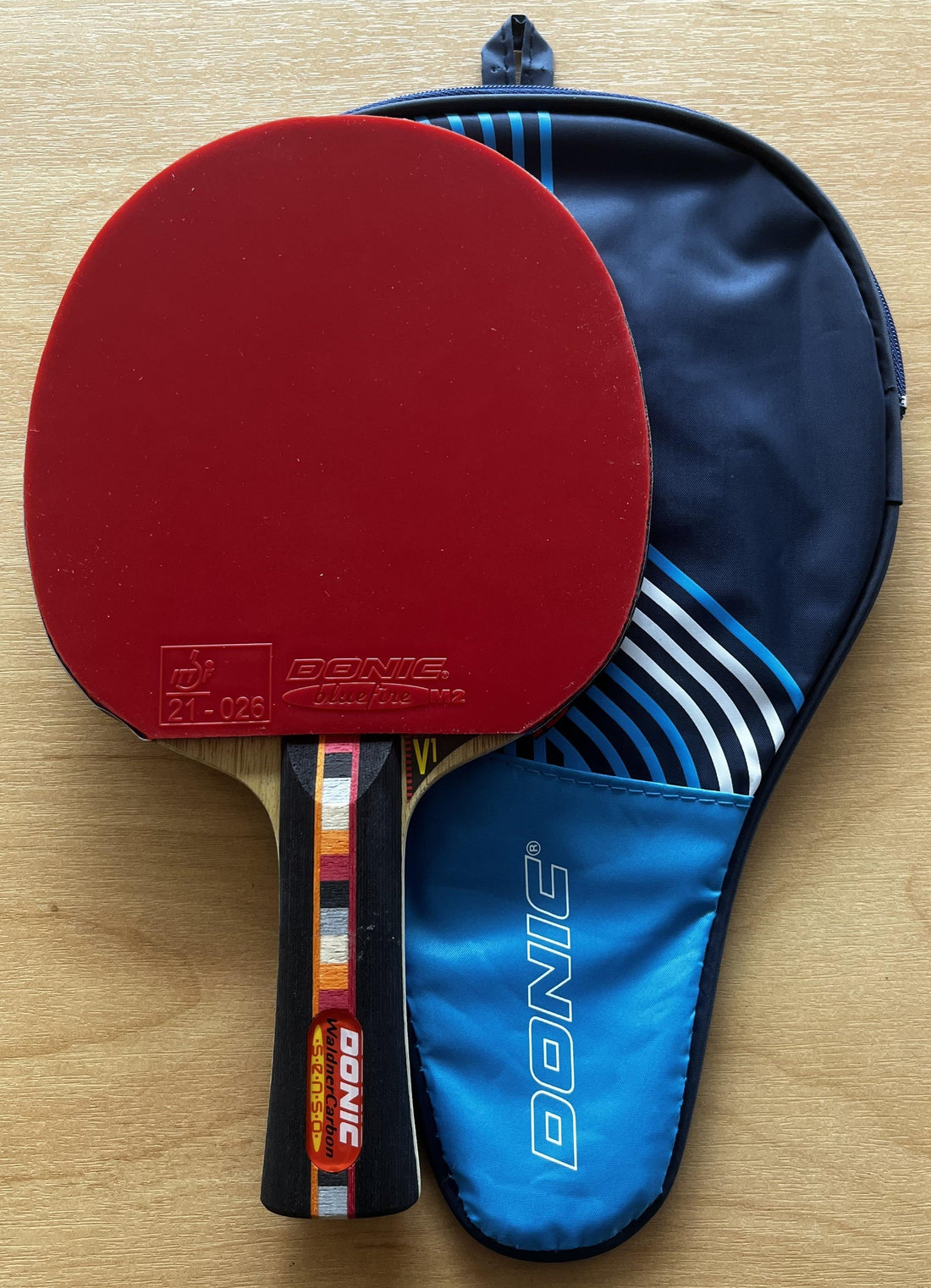
How to Pick the Right Table Tennis Bat: Blade Speed, Rubber Tackiness & Handle Types

Choosing the perfect table tennis bat (also known as a table tennis paddle or ping pong bat) can feel overwhelming because of the many blade, rubber, and handle options. This quick guide will walk you through:
Blade Speed – matching power to your play style
Rubber Tackiness – balancing spin vs control
Handle Types – finding your most comfortable grip
Along the way, you’ll see recommendations from our Topspin TT collection, whether you’re hunting for the best table tennis bats UK, a lightweight ping pong paddle for spin, or a durable table tennis racket built for speed.
1. Understanding Blade Speed
Blade speed is rated on a scale from around 1 (slowest, defensive) to 12+ (fastest, offensive).
Defensive - 1 to 6 - Def : Maximum control for chopping and blocking.
Allround - 6+ to 7+ - AR- AR AR+ : Balanced speed and control—ideal for most club players.
Offensive - 8 to 10+ OFF minus OFF OFF+ : High-power blades designed for topspin loops and smashes.
2. Rubber Tackiness & Spin
Rubber tackiness influences how much spin you can generate:
Smooth European Rubbers (e.g. Donic Bluefire M2): Medium-tacky, balanced spin/control.
Chinese-Style Tackier Rubbers (e.g. Sanwei Target National rubber / Donic Bluegrip Range ): Sticky topsheets deliver heavy spin at the cost of a slightly slower rebound.
Recommend table tennis bats to playing level
Sanwei Taiji 210 Table Tennis Bat – 5-ply all-wood blade with ITTF-approved Sanwei T88 semi-tacky rubbers. Offers beginner-friendly spin with reliable control.
Club-Level Spin Machine:
Sanwei TS7 Club Table Tennis Bat with Case – 5-ply offensive blade plus Chinese semi-tacky rubbers for heavy spin and precision. Includes free bat case for protection.
All-Round Pick:
Sanwei Accumulator Bat - this is a pre made up bat that we want to push for intermediate players and we have good stock.
Offensive Pro-Level:
Donic Waldner Carbon Senso Bluefire M2 Bat – Carbon-infused blade rated Speed 11+, Control 6. Perfect for aggressive topspinners.
3. Handle Types & Grip Comfort
The three main handle shapes suit different grip styles:
Flared (wider at the end): Most popular for a secure shakehand grip.
Straight (uniform width): Allows easy rotation between forehand/backhand.
Anatomic (contoured): Fits the palm curve for ultimate comfort.
Quick Tip: Test how each handle feels in your palm. Even two-gram differences can affect long matches.
4. Putting it all together
Define Your Play Style
Control/Defence: Look for speed ≤6, smooth rubbers, flared handle.
All-Round Versatility: Speed 6–7+, medium-tacky rubbers, handle of choice.
Aggressive Offence: Speed 8-10++, tacky/esp. Chinese rubbers, consider an anatomical handle for added feel.
Match Blade + Rubber
A fast carbon blade pairs well with less tacky rubbers to keep play balanced.
An all-wood blade with very tacky rubbers can produce spin without excessive speed.
Don’t Forget Accessories
Table tennis bat rubbers: Keep them fresh—replace every 3–6 months.
Table tennis bat case: Protect your paddle when you travel.
Table tennis bat cleaner: Wipe down rubbers after each session to maintain tack.
5. FAQs
Q: What blade speed is best for beginners?
A: Aim for an AR Blade - 6 - to 7+. It blends enough speed to learn loops with control for consistent rallies.
Q: How often should I replace my rubbers?
A: Casual players: ~6–12 months. Club/trainers: ~3–6 months. Look for decreased grip or uneven bounce as signs to swap in new rubbers.
Q: Are tacky rubbers legal in competition?
A: Yes—provided they’re ITTF-approved. Many tournaments allow Chinese-style tacky rubbers like Sanwei T88.
Ready to Upgrade Your Game?
Discover our full range of top-quality table tennis bats—shop the collection now for fast UK shipping on the best table tennis bats UK!
